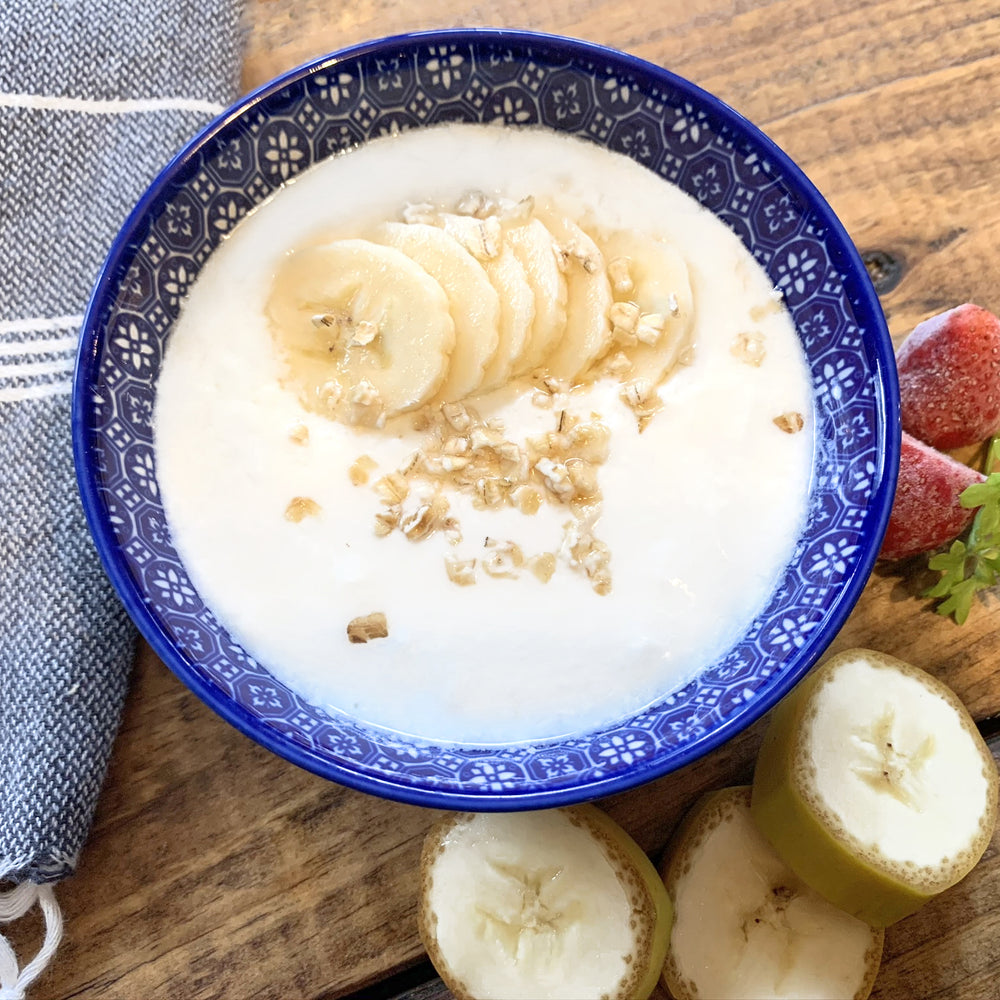
Filmjölk is very popular in the Nordic region, especially in Sweden. Its traditionally consumed at breakfast in place of milk. It's typically mixed with cereal or muesli / granola. Another popular choice is crisp bread on top of the filmjölk. For extra flavor, some people add some fruit, jam, ginger, sugar, etc. It is also traditionally consumed as a snack by itself, similar to regular yogurt.
Its been around for at least a couple hundred years, but some references point as far back to the time of the Vikings.
The dominate strains of filmjölk are Lactococcus lactis, Lactococcus lactis cremoris, Lactococcus lactis diacetylactis, Leuconostoc mesenteroides cremoris.
How is filmjölk different to regular yogurt?

Filmjölk is a mesophilic yogurt which means that it ferments at room temperature. So, there is no heating required like regular yogurt, which makes it a lot easier and convenient.
The flavor is generally less sour than regular yogurt. Its unique quality is its deliciously mild buttery flavor. The filmjölk yogurt making process produces Diacetyl which is an organic compound known for its intense buttery flavor.

Filmjölk consistency is somewhere between spoon-able and drinkable, so you can enjoy it either way. Typically, it’s a little thinner than regular yogurt or villi, so that is why it goes great with cereal or muesli.
Health benefits
Like most yogurts, it has the basic benefits of adding beneficial bacteria, bio-available vitamins, lactic acid, and the production of short chain fatty acids.
Filmjölk has a lower glycemic index than milk. Traditionally it takes the place of milk for breakfast and the lower glycemic index means a lower early morning blood sugar spike.
According to one study, Lactococcus lactis subsp. cremoris (which filmjölk contains) is very effective at utilizing lactose and galactose. It’s more effective than other LAB strains that are more commonly found in yogurt production. Which basically means that in the end the free lactose and galactose is lower in filmjolk than most other yogurts.
The filmjölk strain, Lactococcus lactis subsp. cremoris is one of the most researched strains out there. It survives the passage through the gastrointestinal tract and known to deliver beneficial bio-active peptides to the gut. The bacteria shows resistance to bacteriophage, and produces unique compounds from the amino acids.
Bottom Line
Filmjölk is fun, delicious and healthy. Hugely popular in the Nordic region and most commonly consumed at breakfast in place of milk. It has a pleasant mild (not too sour), buttery flavor that can go with an assortment of cereals, breads and fruits.
Filmjölk has a lower glycemic index and contains Lactococcus lactis subsp. Cremoris which is known to be effectively utilize lactose and galactose as well as as deliver beneficial peptides to the gut.
Filmjölk is an easy alternative to making traditional yogurt as there is no heating required.
It's mild buttery flavor makes this culture unique and treasured by many around the world.


Comments
Eva Dahllof
Hi! I am Swedish but live abroad in Spain and I cannot buy fil milk here. I would be pleased if you could help me to find the culture: Lactococcus lactis subspecies. cremorís.
Hope to hear from you as soon as possible!
Many thanks,
Eva
October 26, 2023
Yemoos Nourishing Cultures
Hi Donna-Lee. Yes you can use goats milk with filmjolk, however it will be significantly thinner due the protein structure of goats milk. Also if its raw goats milk, then there’s a chance that the natural bacteria of the raw milk will overpower the filmjolk strains. We recommend keeping a mother starter in pasteurized milk (cow or goat) in case that happens.
June 11, 2020
Donna-Lee
Hi Emily, I am cow milk intolerant & have access to fresh goat milk & kefir. Is there a way to make filmjolk from these?
Thank you!
June 11, 2020
Leave a comment